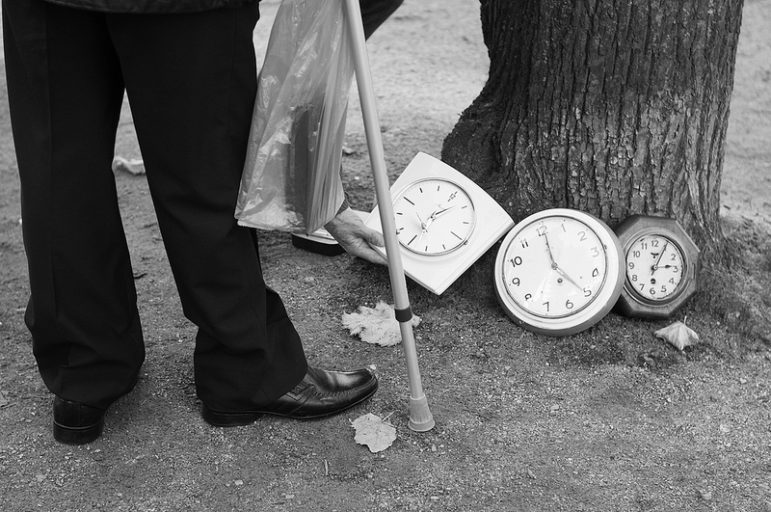
September 15, 2016; Washington Post
In 2014, the Washington Post ran an investigative report entitled “The Business of Dying,” which documented the ways in which the for-profit incursion into the hospice business was fueling massively increased Medicare costs and instances of fraud. NPQ has covered this as an issue of sectoral appropriateness to certain fields, comprising nursing homes and hospice as well as charter schools and colleges, repeatedly over the years. As most readers will know, hospice care was dominated by nonprofits until recently, but for-profits have entered the field aggressively, with expansion and profitability top of mind.
Hospice care is meant to provide comfort and dignity to people in the final stages of terminal illness. So how to explain the dramatic increase in the last ten years of patients outliving hospice care? Among other things, evidence is growing that many patients accepted into hospice are not really appropriate for it. The average discharge rate of patients from hospice care before death is 15 percent and primarily a result of patients’ health improving unexpectedly. But at some hospices, the Post discovered, that rate is double or more, particularly at new, for-profit providers.
A recently published report from the Office of the Inspector General of the Department of Health and Human Services (OIG), after their own investigation into hospice care, provided an answer. Sadly, this is not the result of miraculous work by modern medicine, but Medicare fraud.
To receive Medicare hospice coverage, a patient must fill out an election statement from the hospice provider acknowledging she understands she is waving any treatment other than palliative care. Additionally, the hospice provider must obtain certification from a physician confirming the patient is terminally ill and hospice care is an appropriate course of action. After reviewing a random sample of these election statements and physicians’ certifications from hospice general inpatient (GIP) stays in 2012, the OIG found alarming issues with both.
More than one-third of election statements from GIP stays lacked the required information, particularly failing to outline that the patient was waiving certain Medicare services by accepting hospice care, including curative treatments. Additionally, in 14 percent of the GIP stays, the physician did not meet the requirements of certifying the patient, providing vague details about the patient’s diagnosis and indicating only cursory involvement with the patient and in determining the necessity of hospice care.
Sign up for our free newsletters
Subscribe to NPQ's newsletters to have our top stories delivered directly to your inbox.
By signing up, you agree to our privacy policy and terms of use, and to receive messages from NPQ and our partners.
Patients who are not near to death require fewer services than those in the last six months of their lives. As Medicare pays a flat rate for hospice beneficiaries, enrolling patients who aren’t near death becomes a financial incentive for duplicitous hospice providers. With one in three patients being discharged alive from hospice care, experts say this points to either inadequate care or the deliberate enrollment of patients who are not terminally ill. Though there are no hard figures on what hospice fraud specifically is costing Medicare, the federal government has recently sought to recover $1 billion that it alleges was billed illegally by hospice providers for beneficiaries not ill enough to qualify for hospice care.
Over sixty cases of hospice-related Medicare fraud have been tried in the past year. Mary Ann Stewart, former chief operating officer of Horizons Hospice, a for-profit in Pittsburgh, was due to go to trial in March of this year on charges of inflating enrollment by recruiting patients not terminally ill. According to prosecutors, employees at Horizons were pressured to enroll whoever was willing, including canvassing people waiting for the bus in inner city Pittsburgh. Based on these high enrollment numbers, Stewart then billed Medicare and Medicaid for millions, using some of it for personal expenses. (Stewart reached a plea deal before the case went to trial.)
Last year, the Department of Justice took hospice provider AseraCare, another for-profit, to court, seeking more than $200 million on charges the organization fraudulently billed Medicare for millions of dollars. The Pittsburgh Post-Gazette reported that patients were enrolled in end-of-life care at the “mere suspicion” of lung cancer. Staff were constantly pressured to increase census figures. Jurors in the AseraCare case found that the company had filed false claims for 104 of 121 patient cases. In April, the judge threw this verdict out because she had committed “major reversible error” in her jury instructions. The Justice Department is currently appealing the judge’s granting of AseraCare’s motion to dismiss the jury verdict.
Providing fraudulent hospice care not only potentially robs people who are not facing end-of-life illnesses of proper treatment for their health issues, but gives ammunition to those who are determined to see Medicare as we know it come to an end. These opponents usually favor alternatives such as Medicare Advantage, where beneficiaries receive Medicare benefits through private insurance companies approved by Medicare. Since 1965, Medicare has provided crucial health coverage to millions of seniors and people with disabilities. However, it is threatened by rising health care costs and political opposition that wishes to do away with it.
This opposition is also eager to repeal the Affordable Care Act, skeptical of its promise to reduce costs and increase the efficiency of the healthcare system without adding a financial burden to its beneficiaries. Many of the Act’s components focus on improving the quality of healthcare, providing care that is patient-centered, and in turn reducing expensive outcomes such as recurring emergency room visits and hospital stays. But this is a long-term vision, still in the early stages, in a world where people demand (and politicians often make promises of) immediate change.
As long as companies are making profits off of healthcare, close scrutiny and monitoring will be necessary. Accountability and oversight of these organizations must be a priority for the federal government, and there is a vast amount of room for improvement. The OIG’s report on hospice fraud made several recommendations to the Centers for Medicare and Medicaid Services, which they have indicated they will adopt, including providing hospices with model text for the election statements and strengthening the review of said statements and physicians’ certifications. Hopefully, changes such as these, and those resulting from the passage of the Affordable Care Act, will be given time to bed in before the country falls into the hands of people who wish to return us all to a pre-1965 healthcare system.—Melinda Crosby











